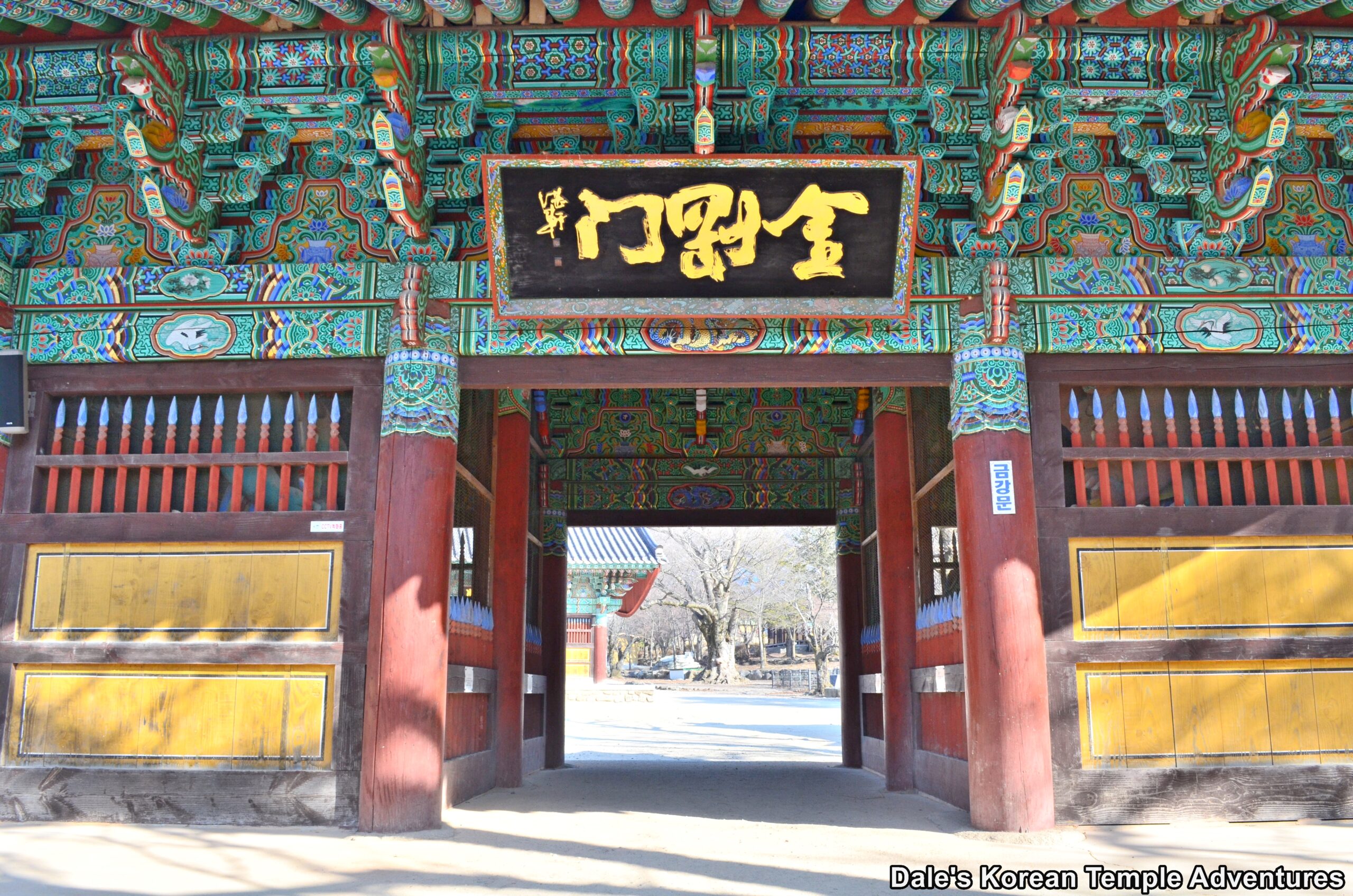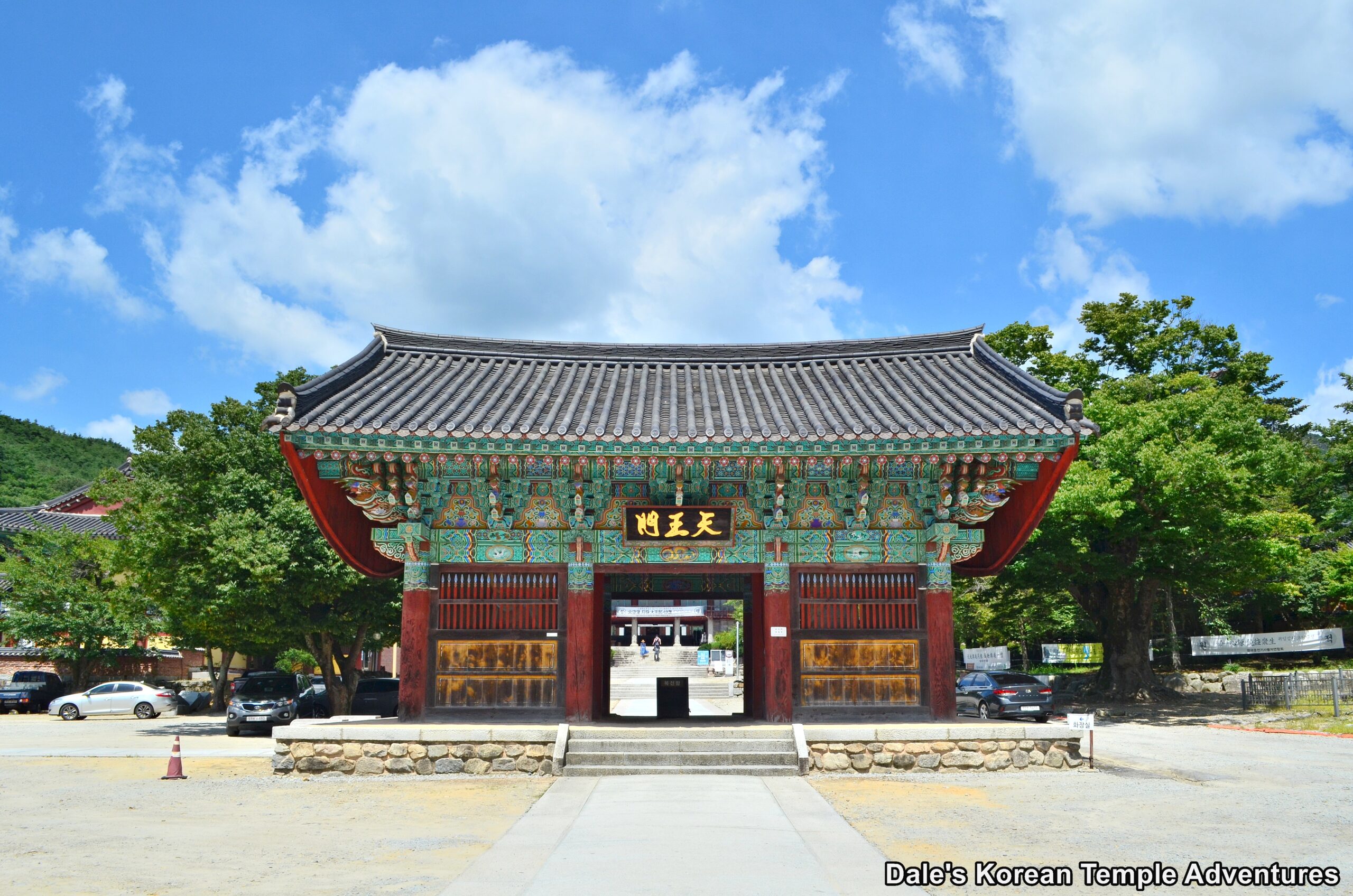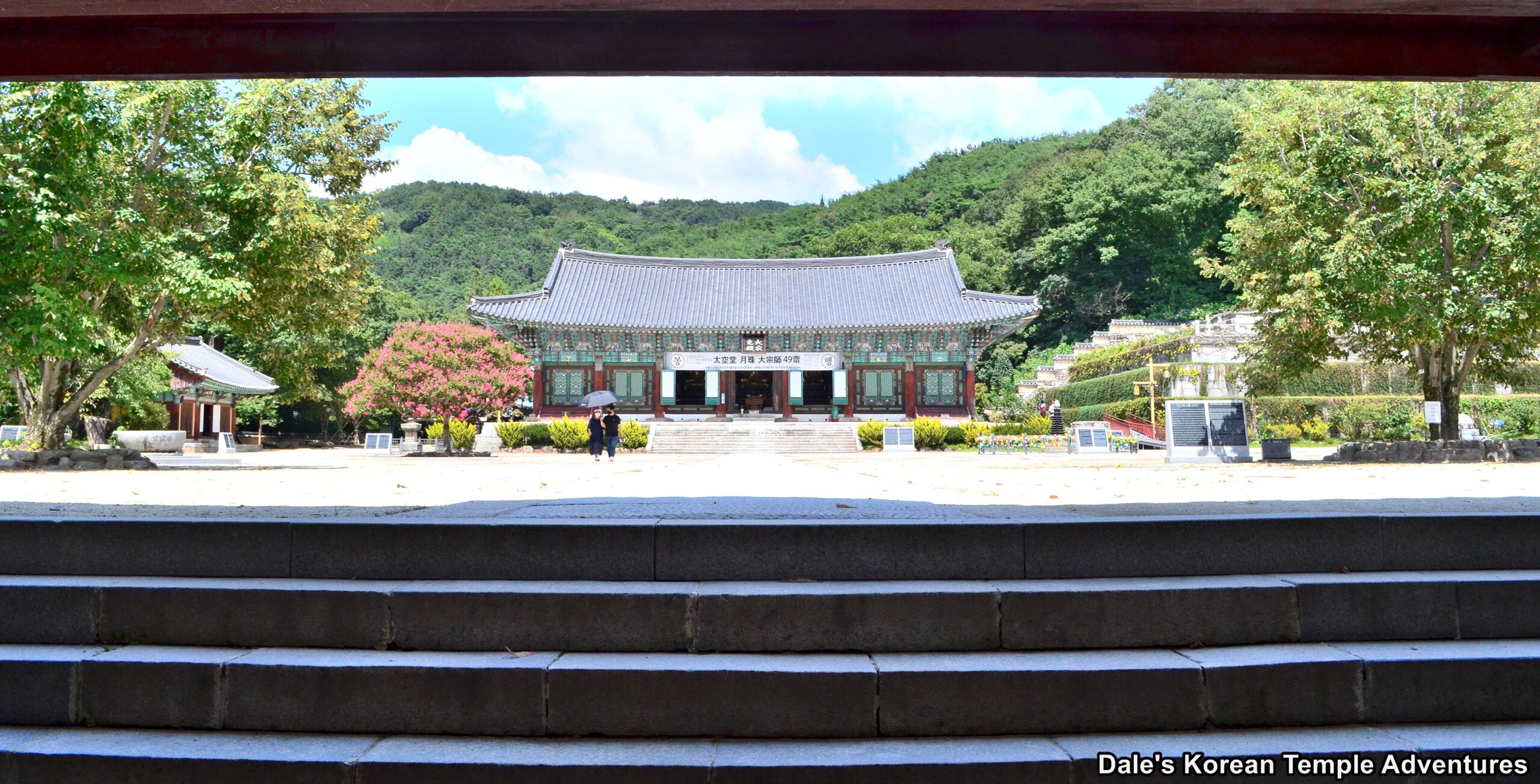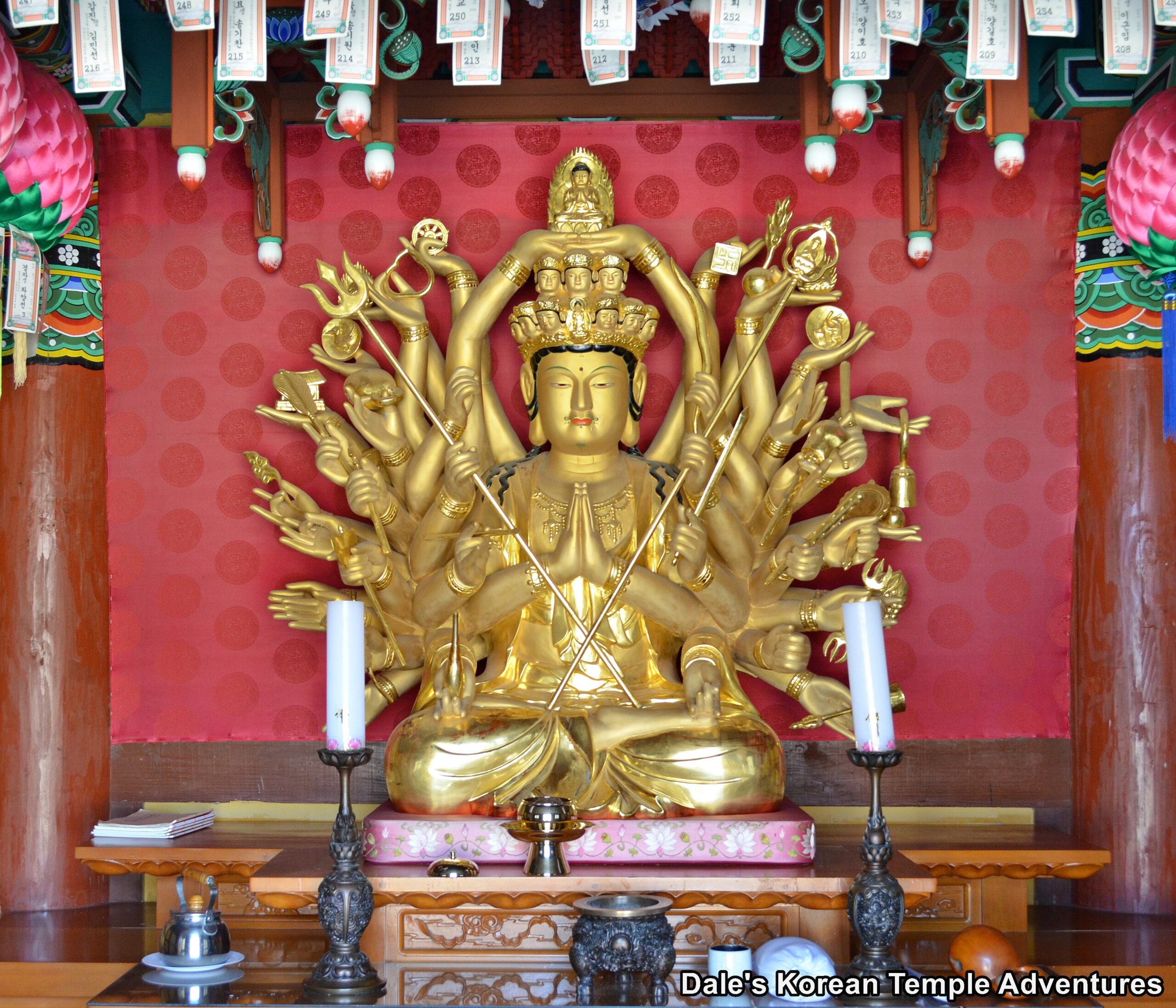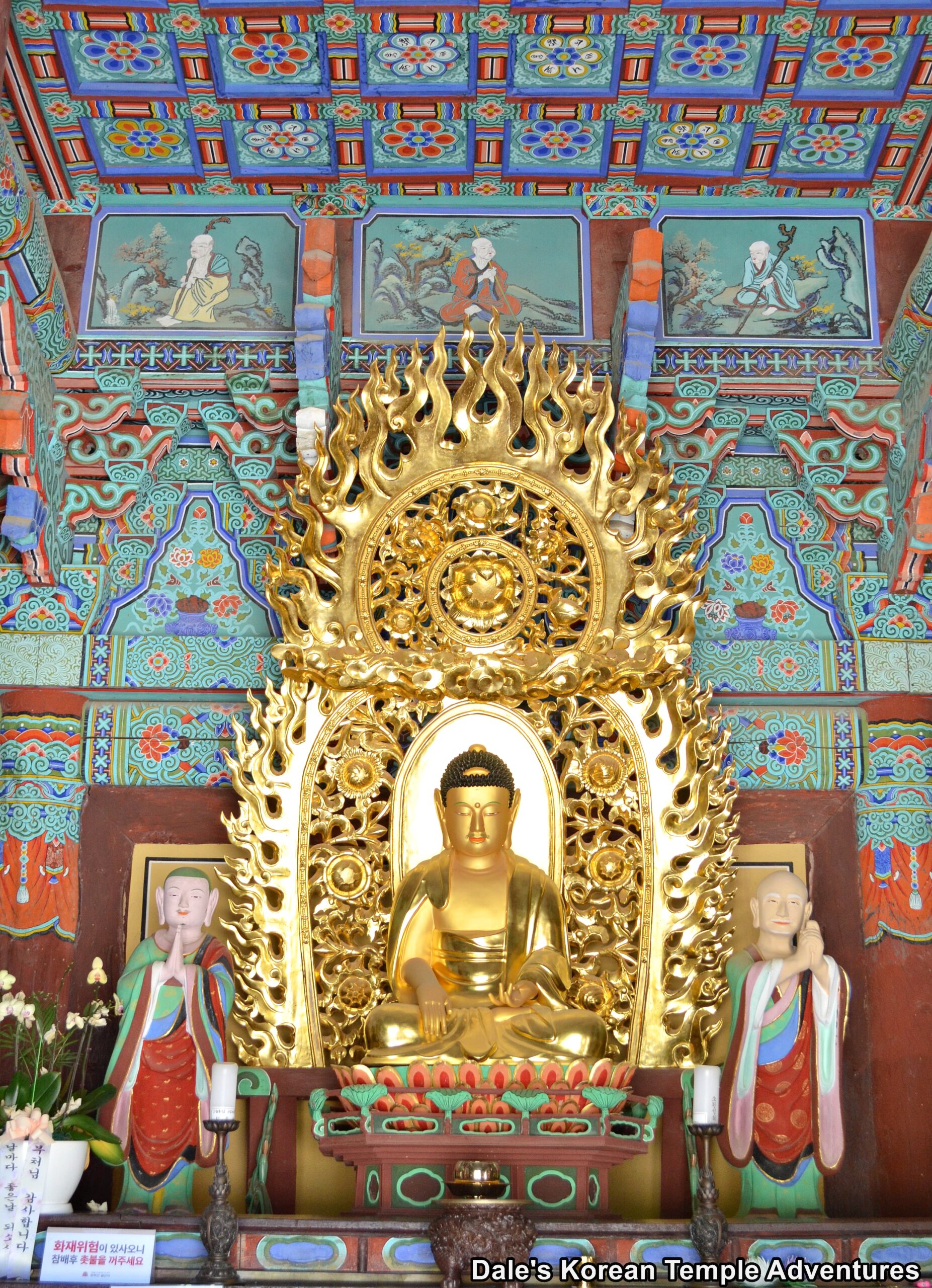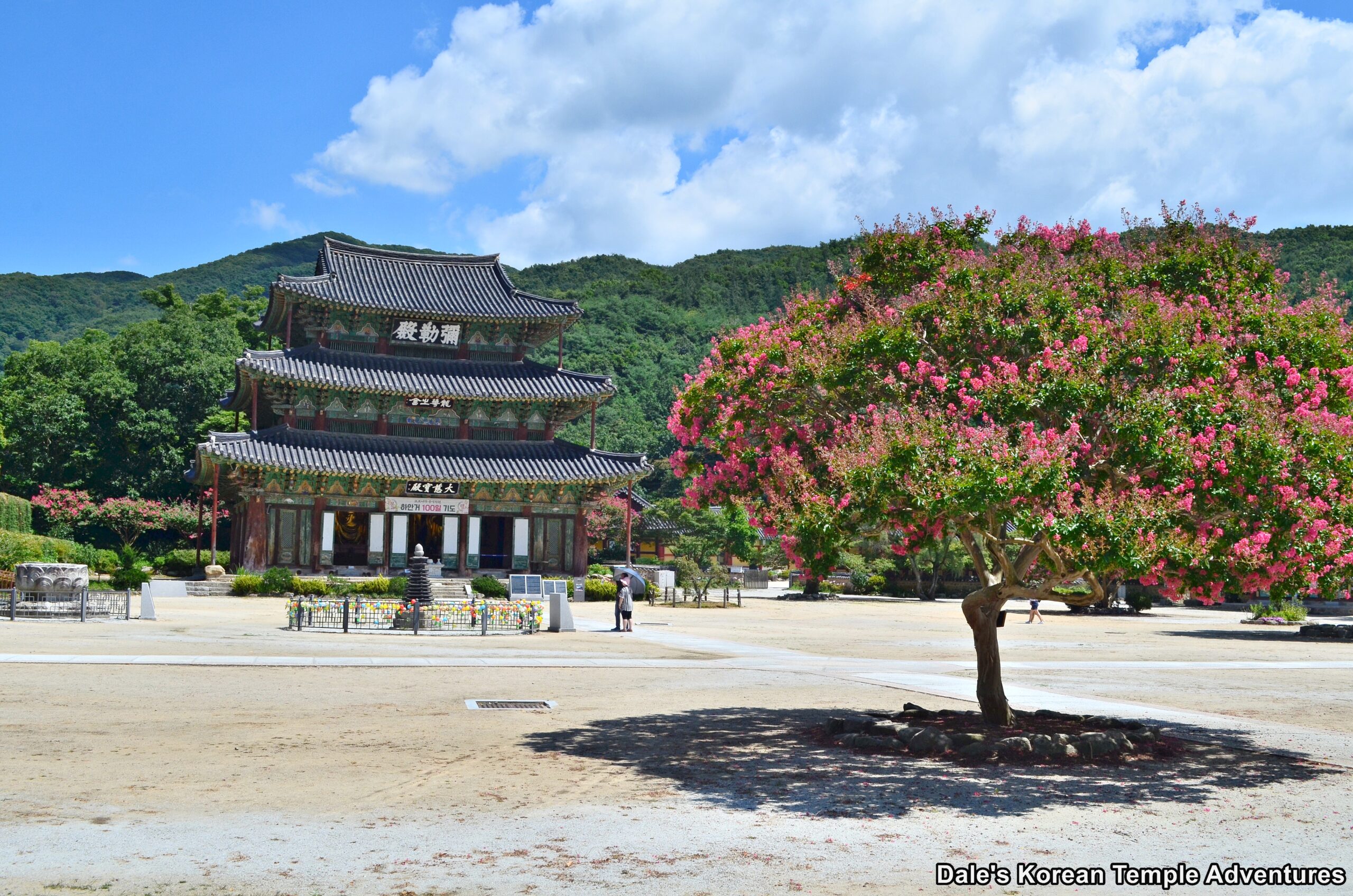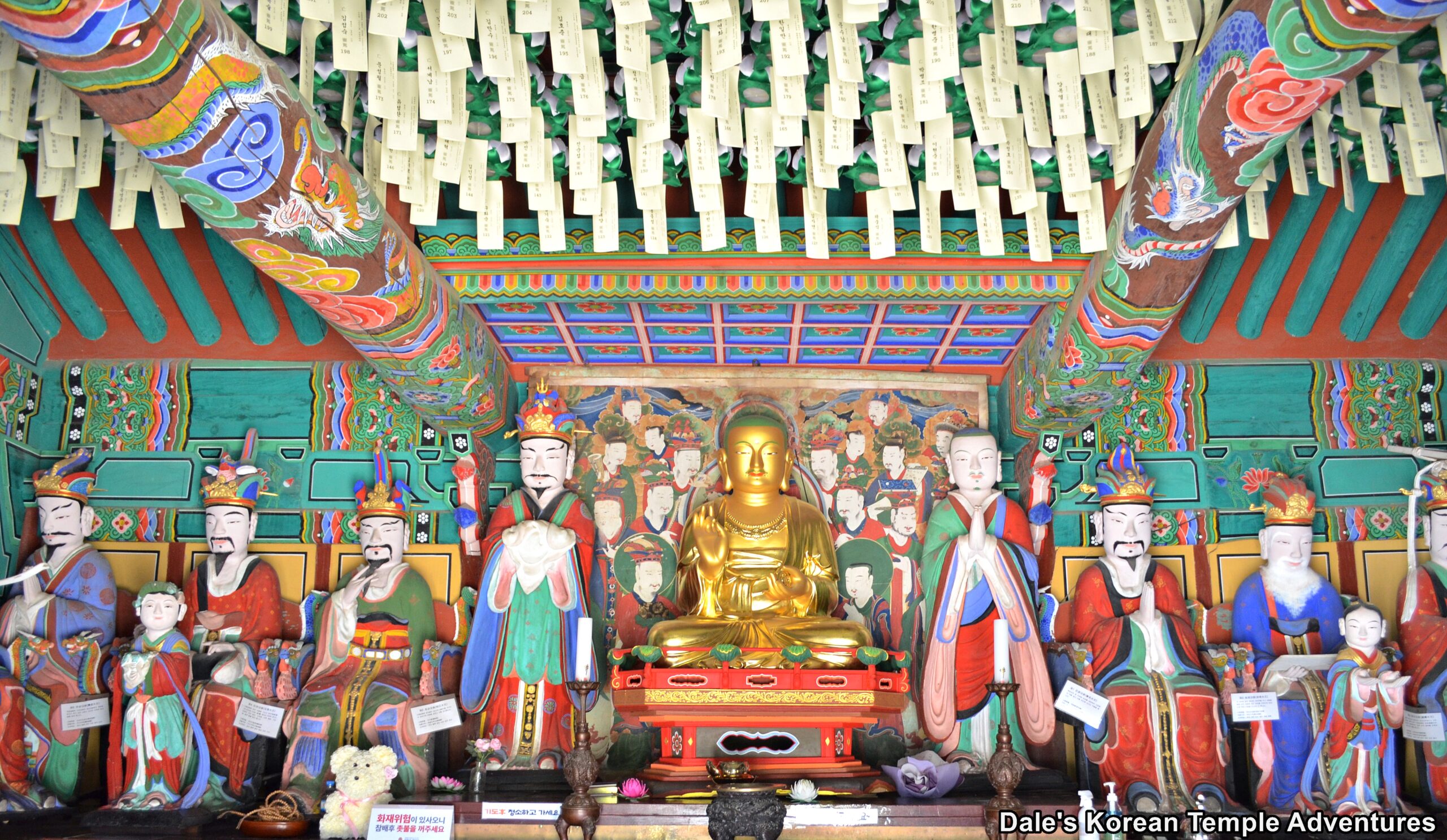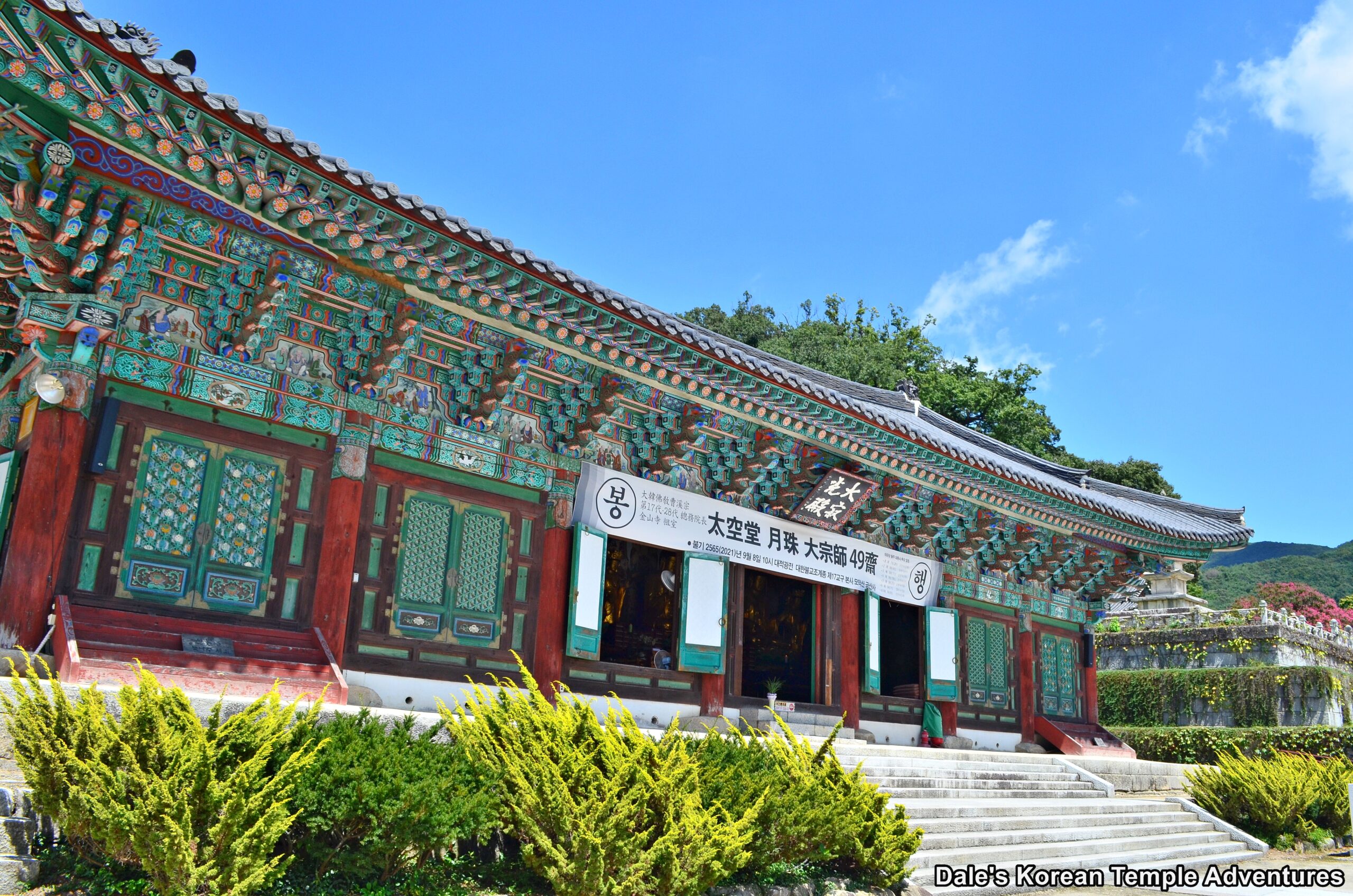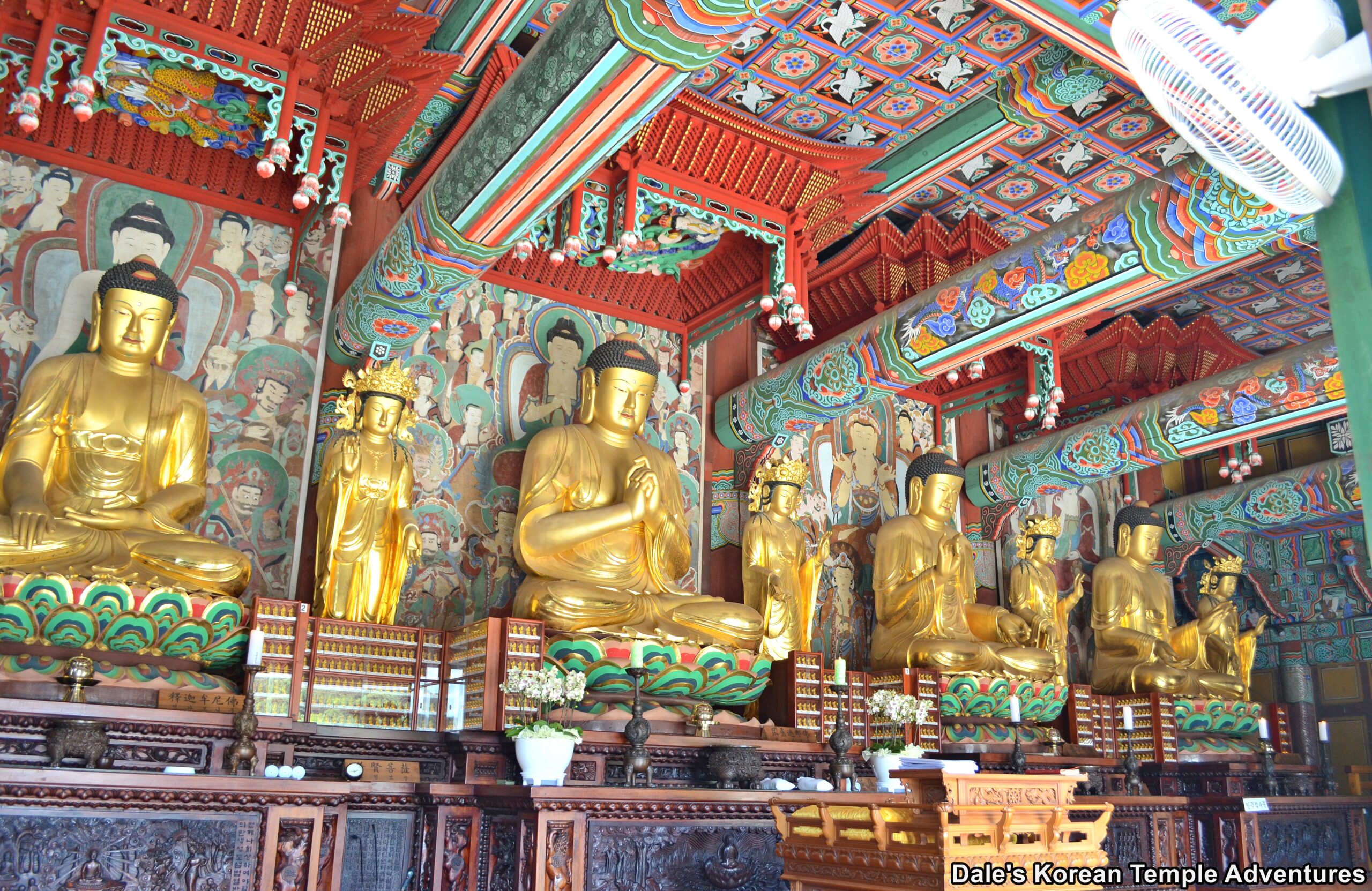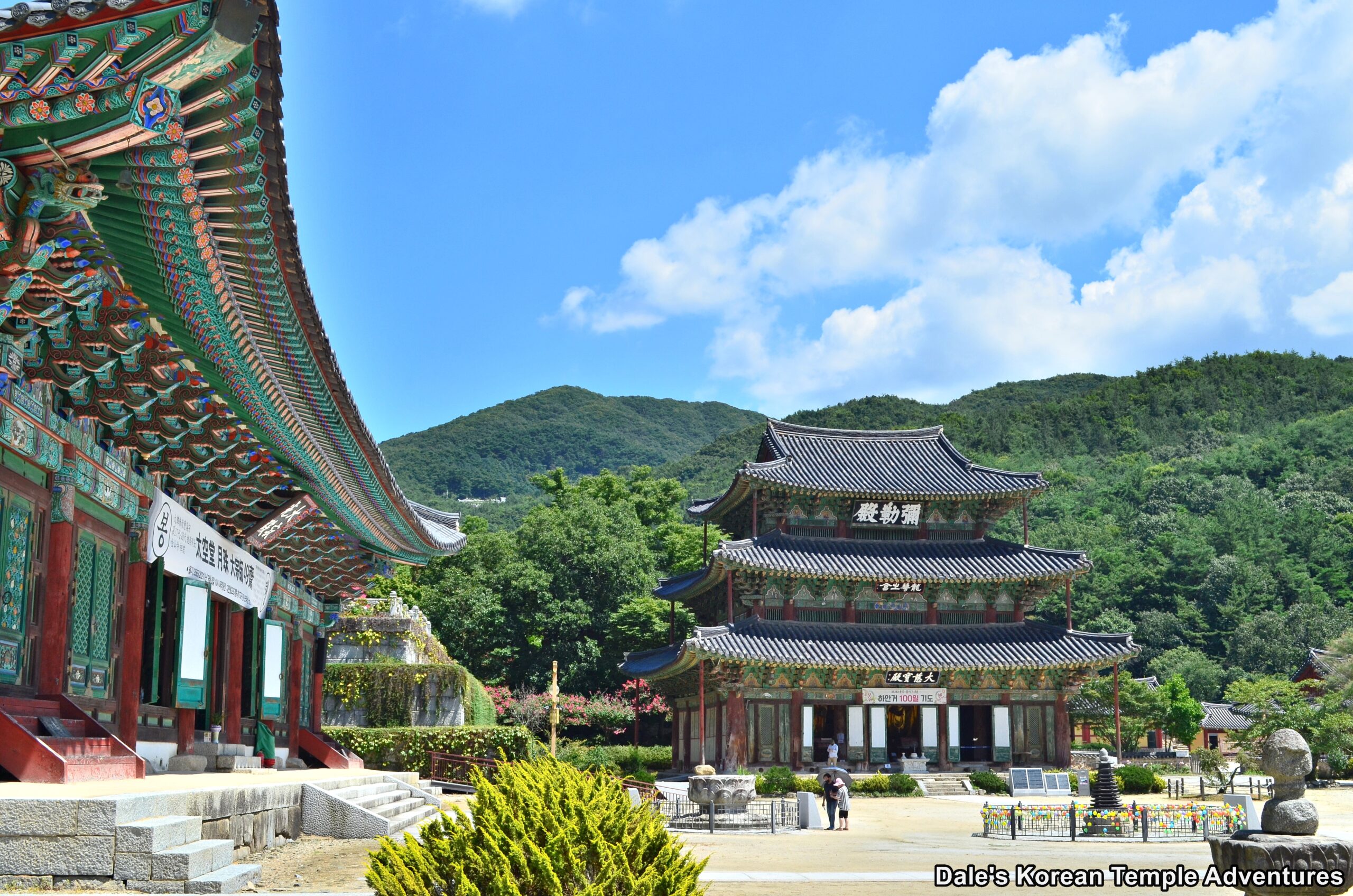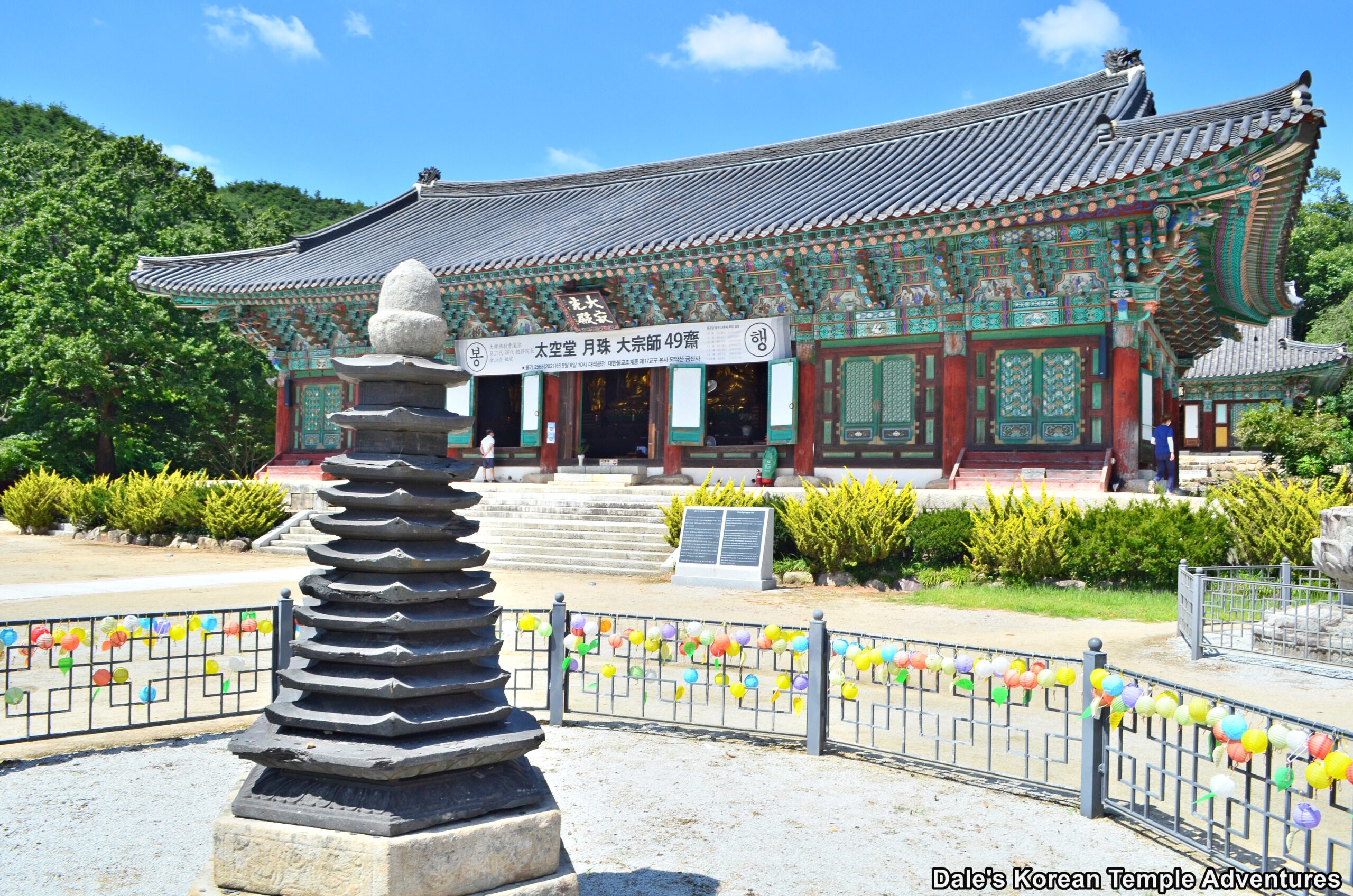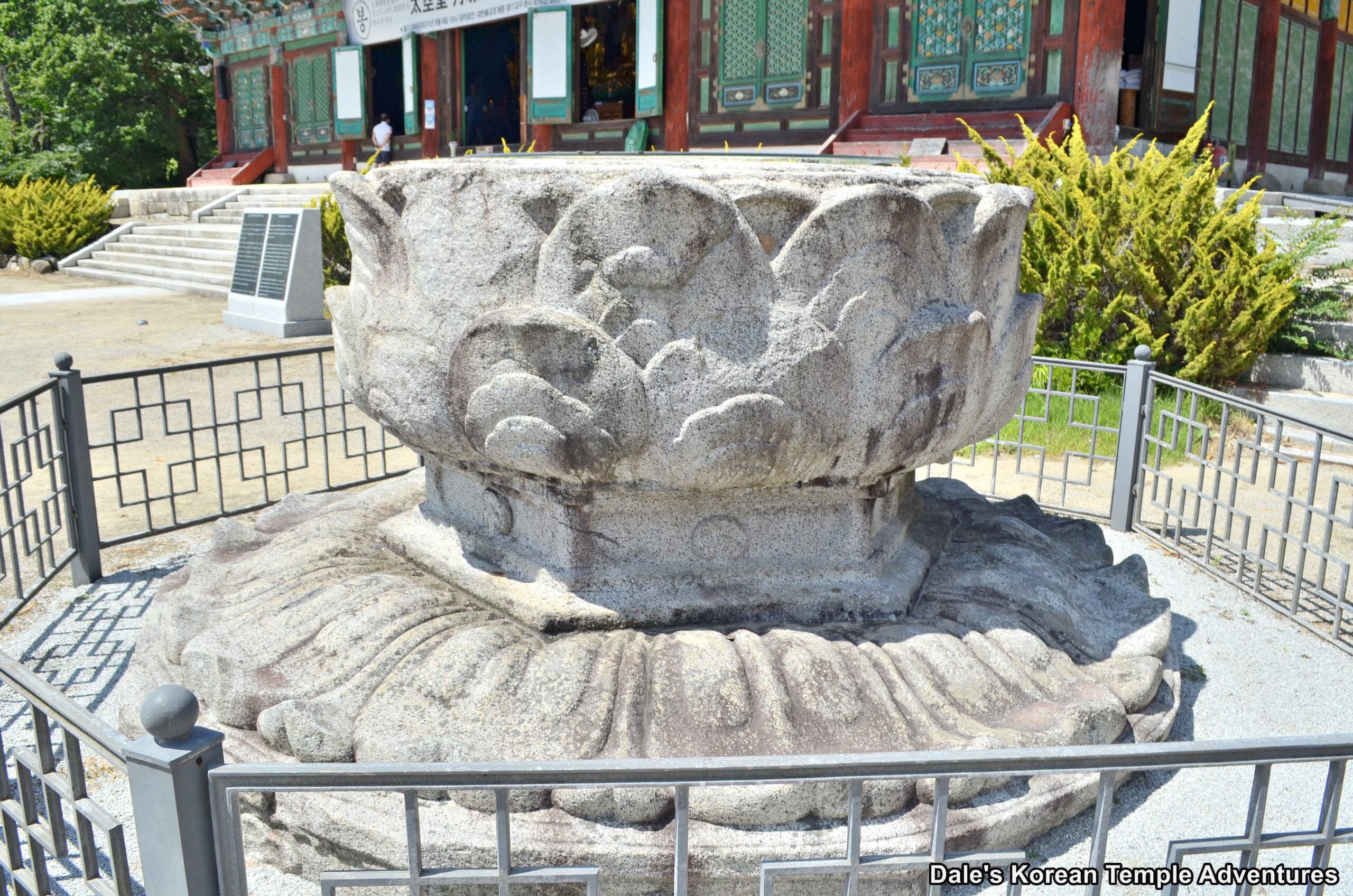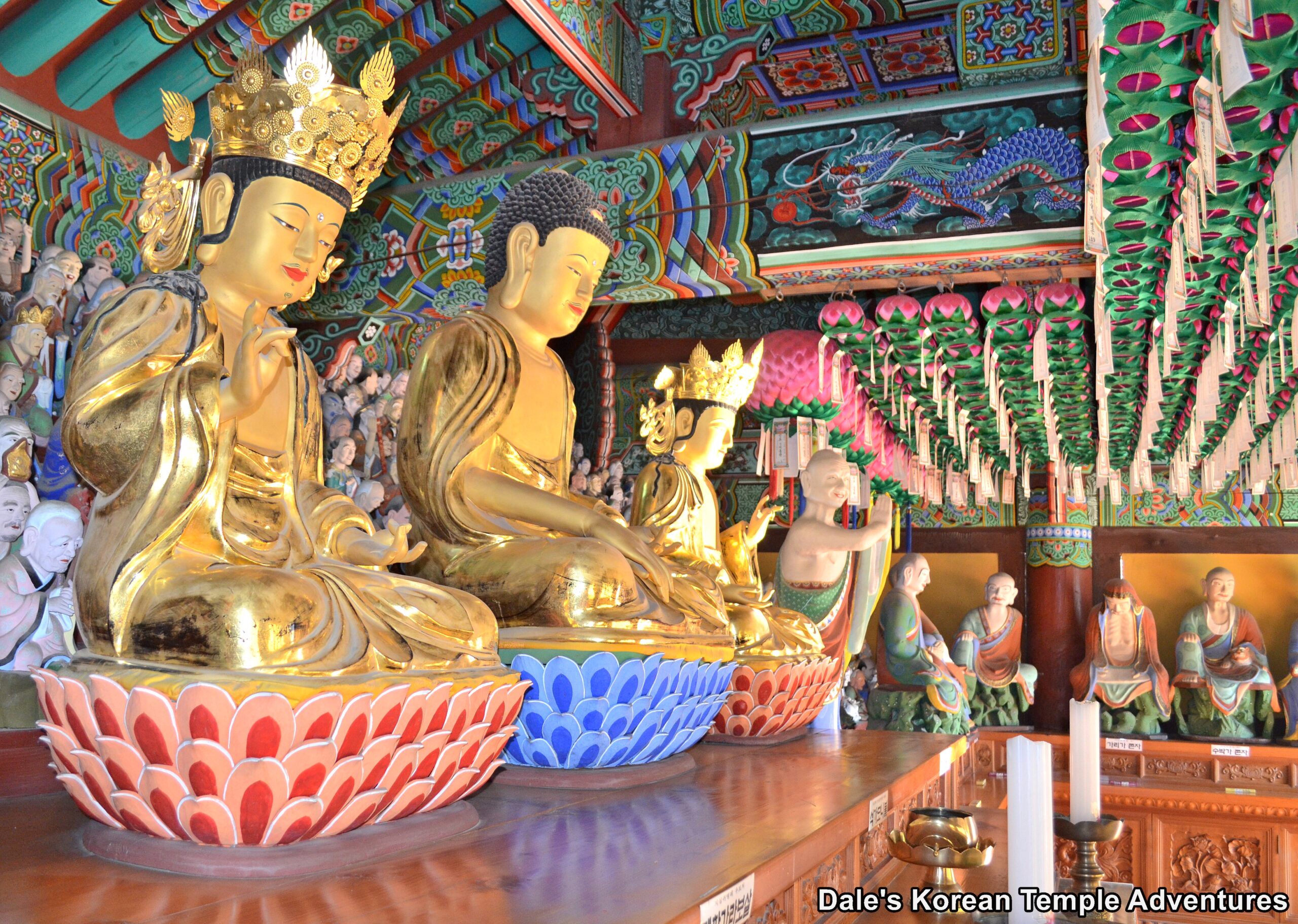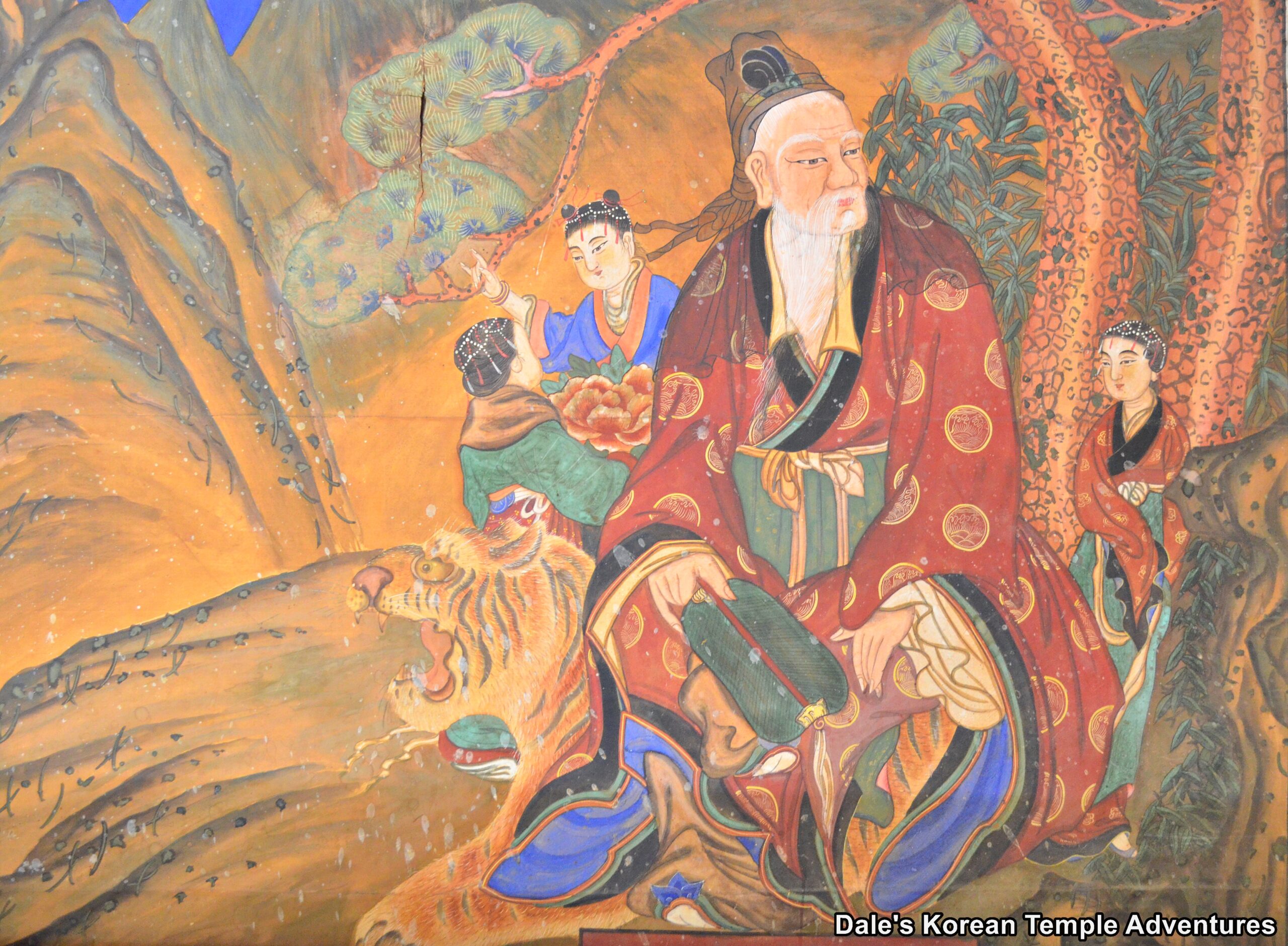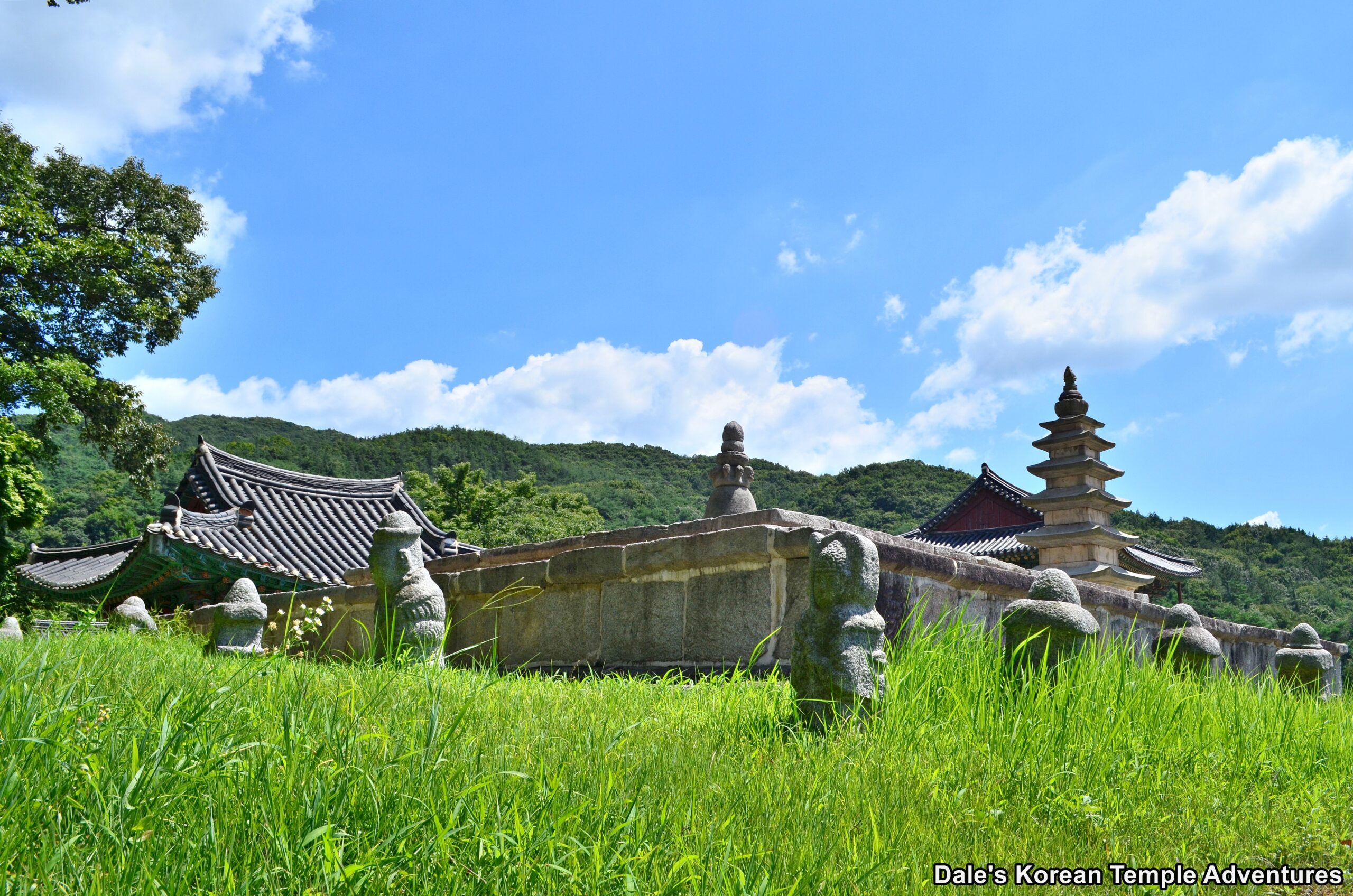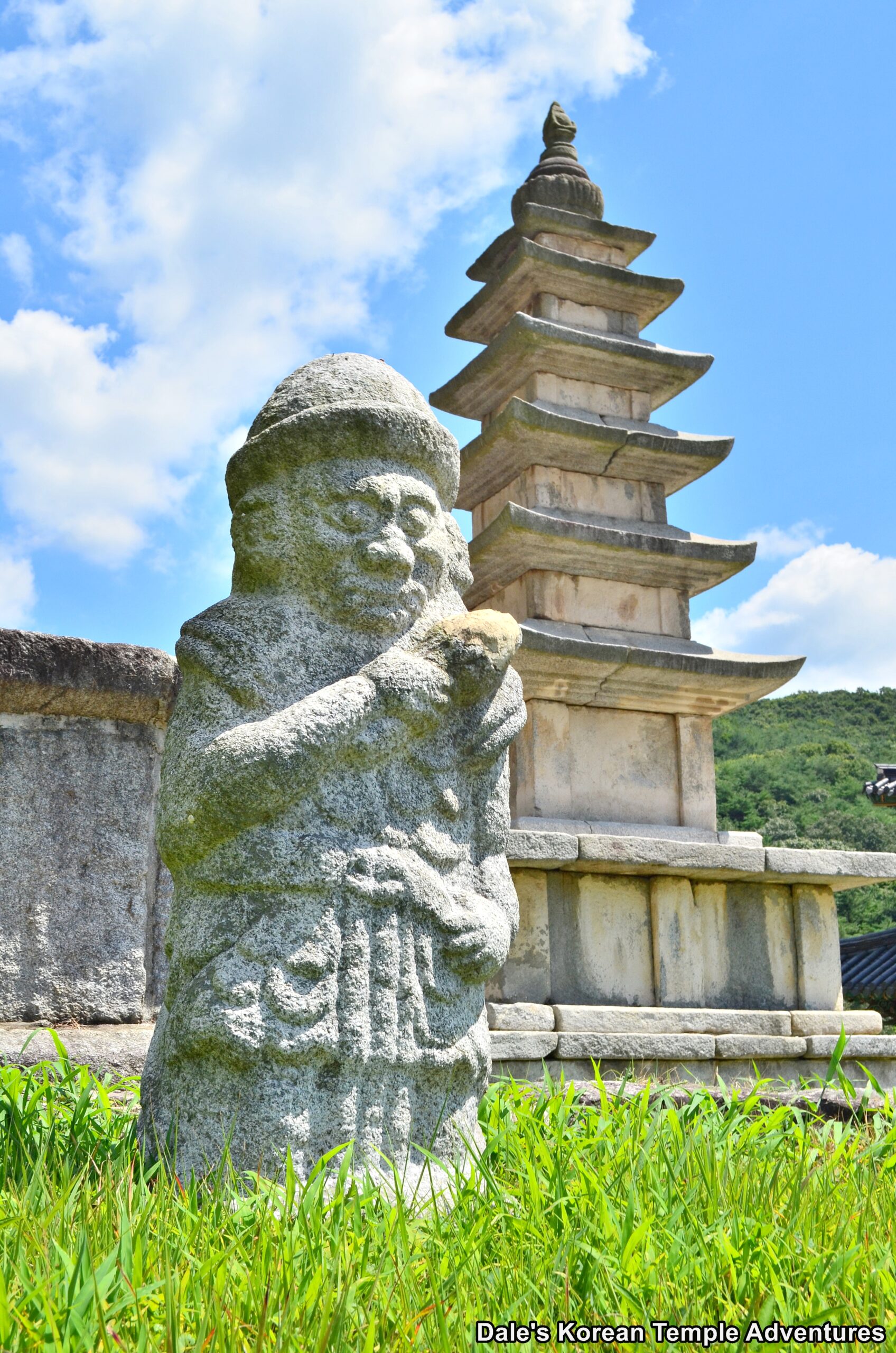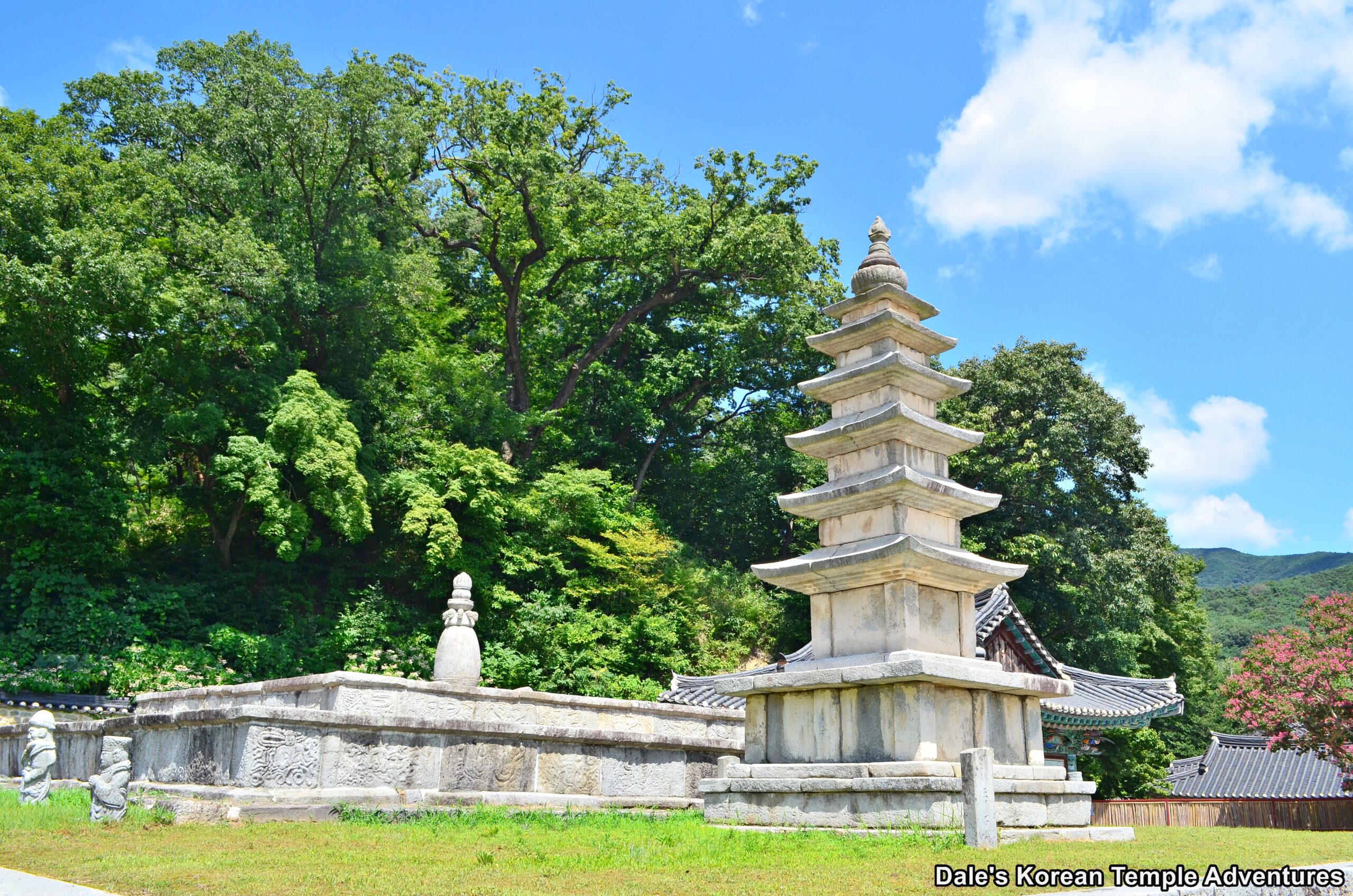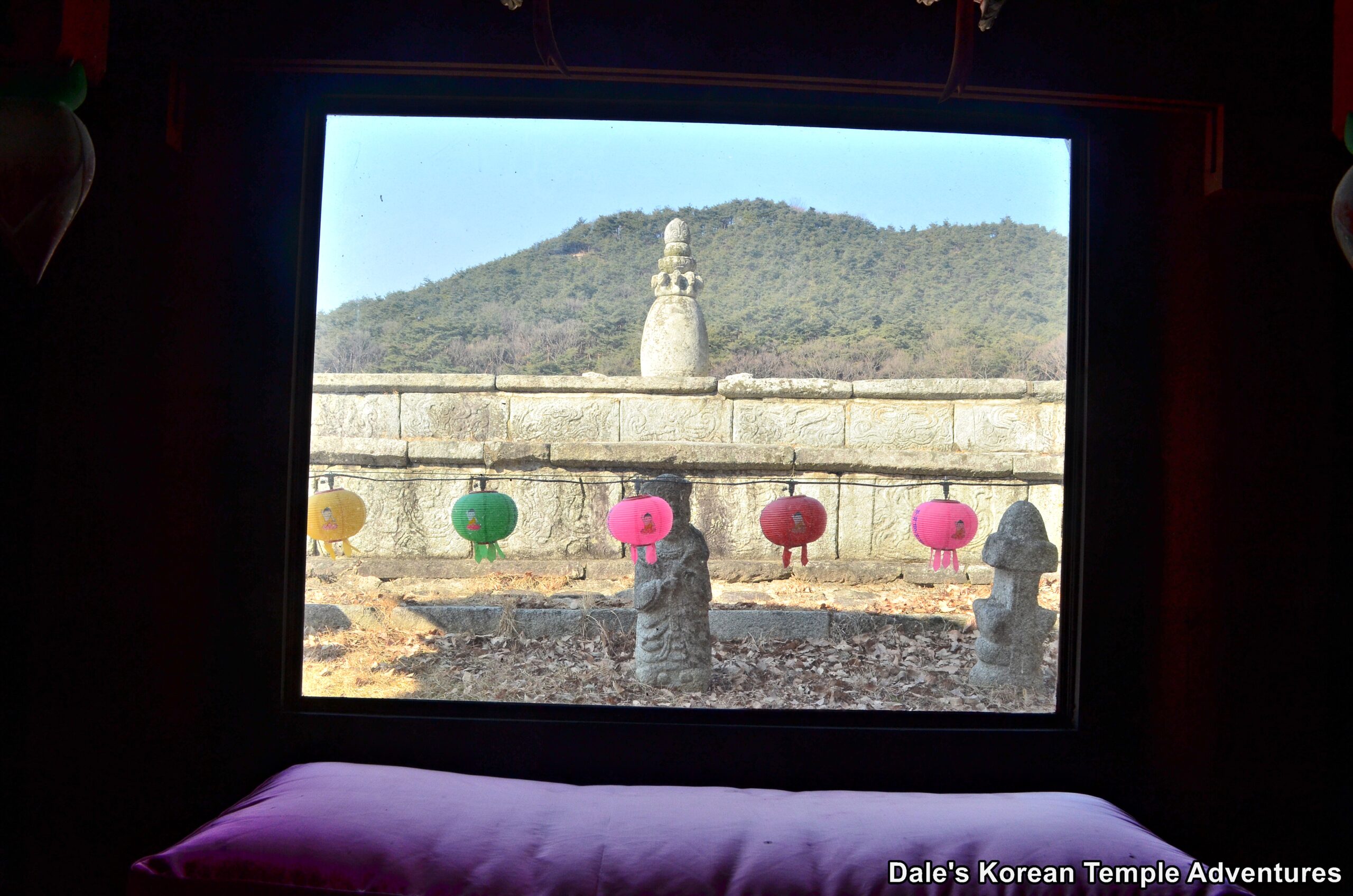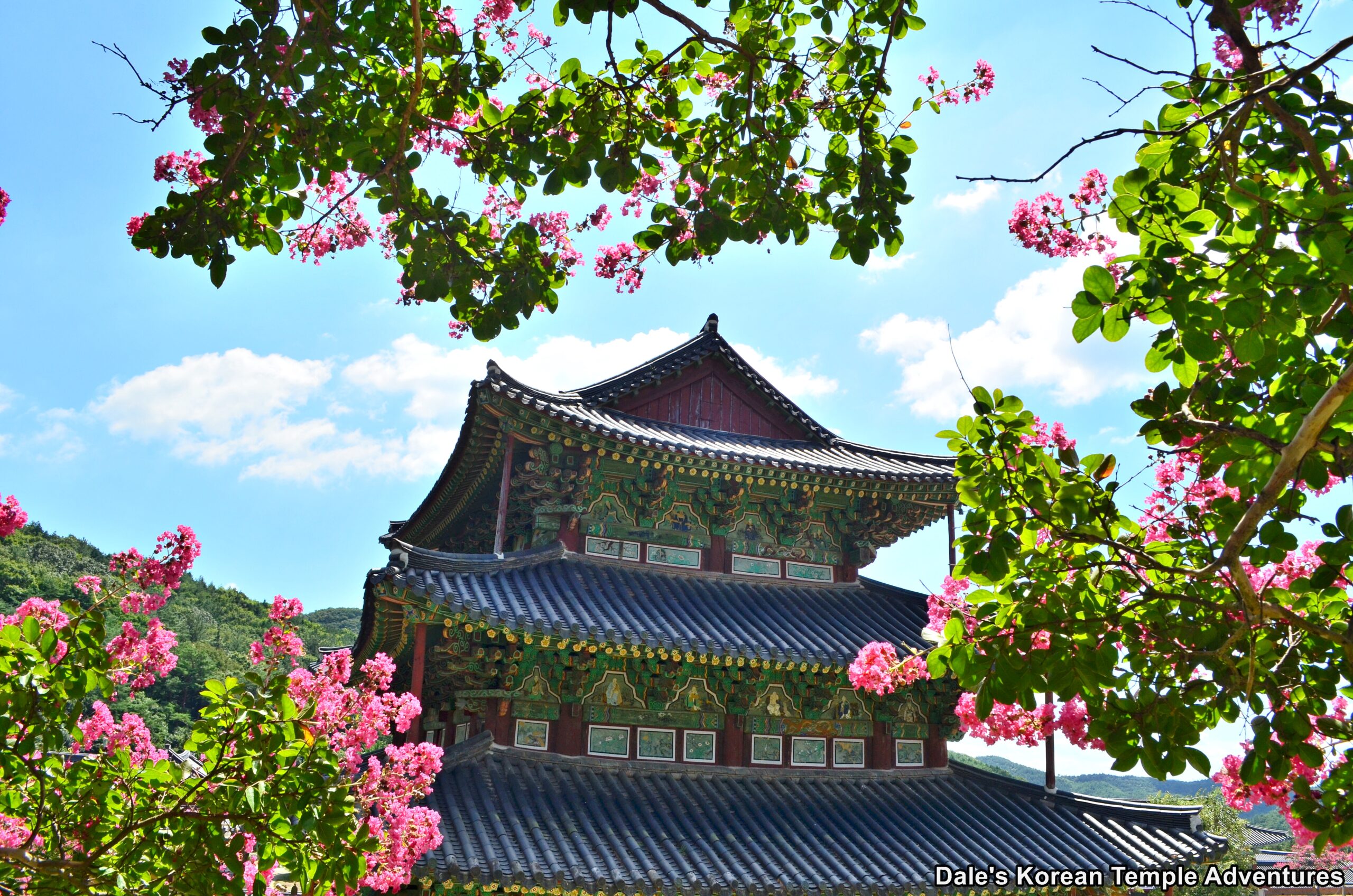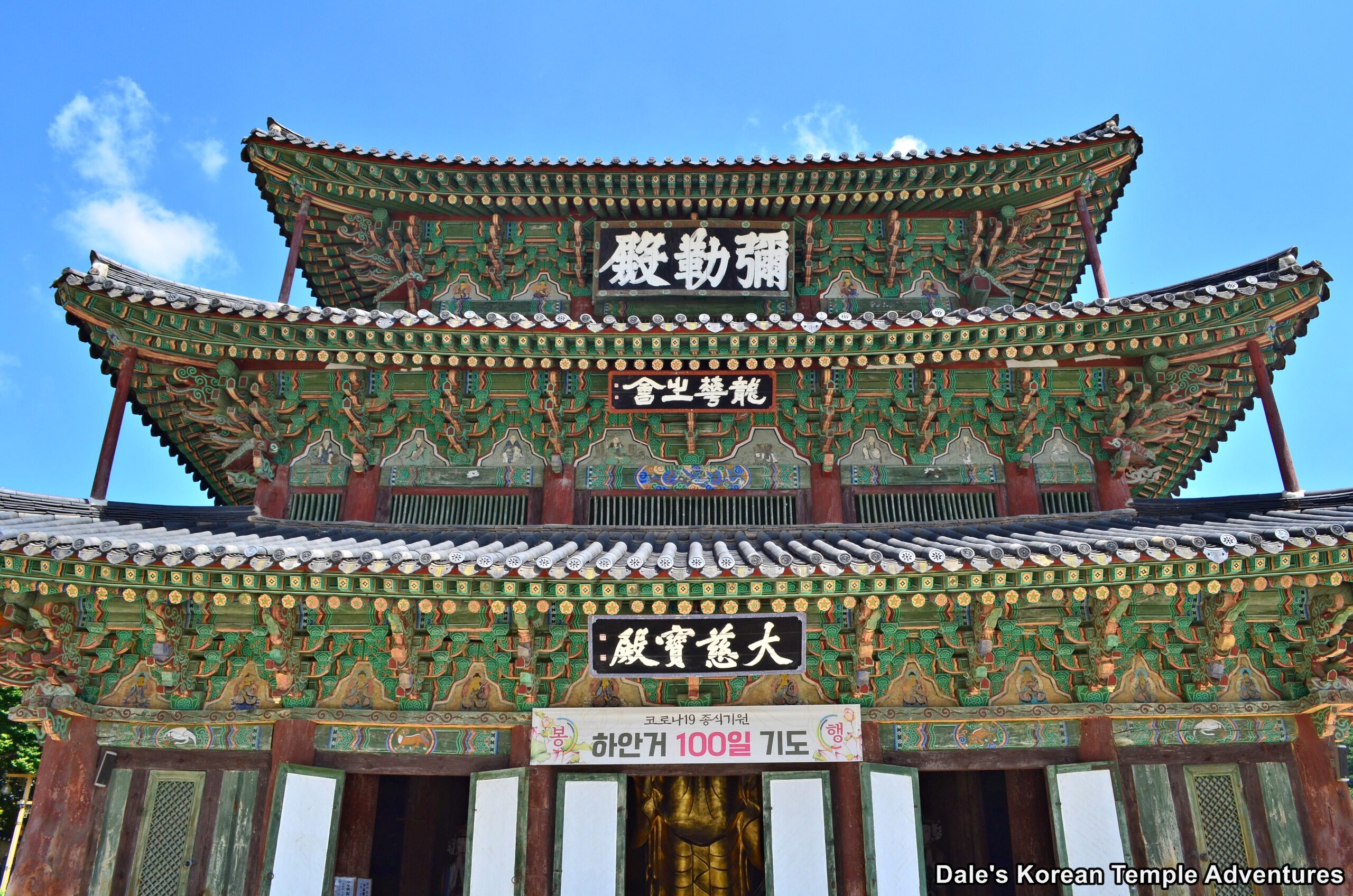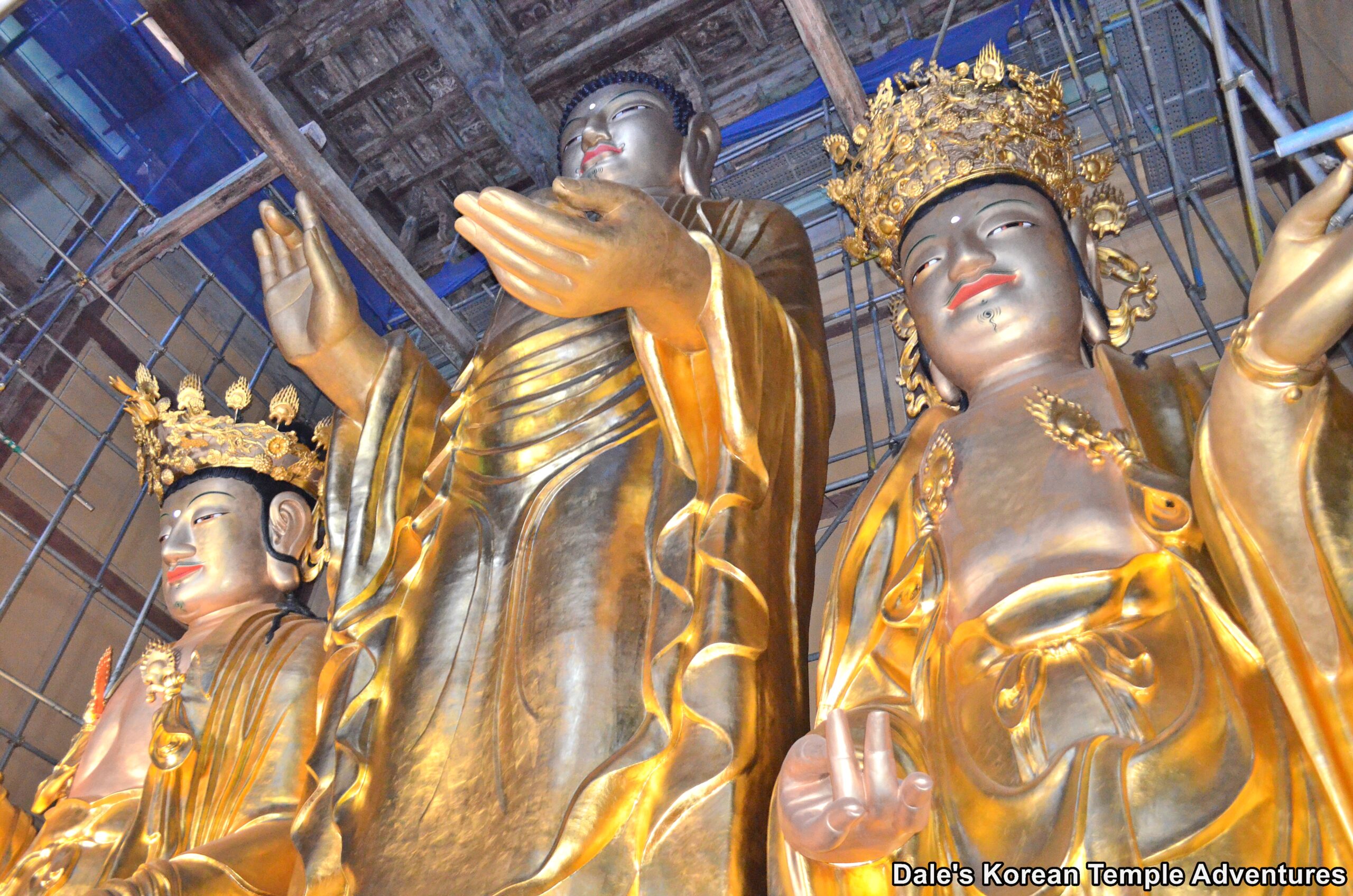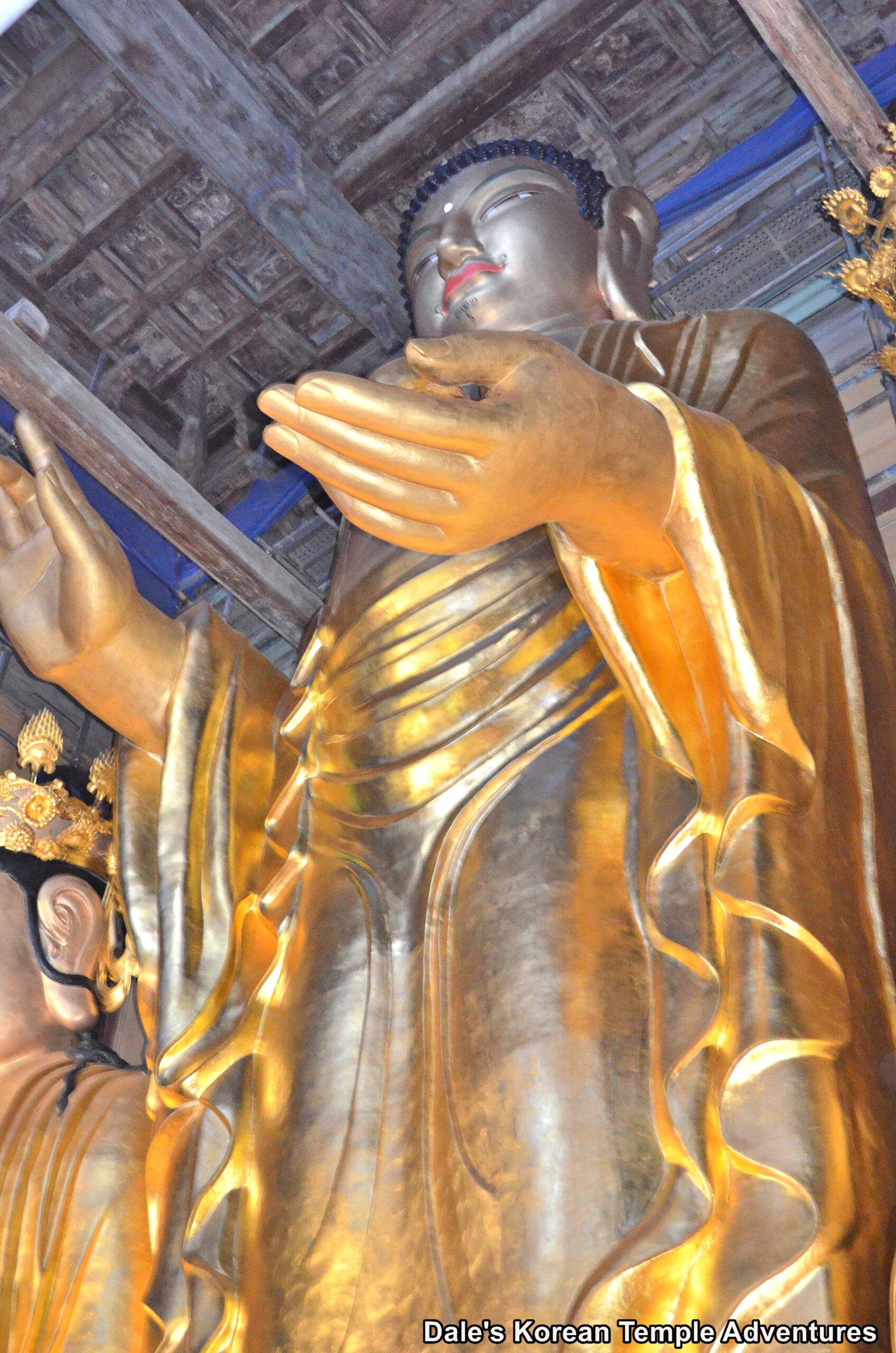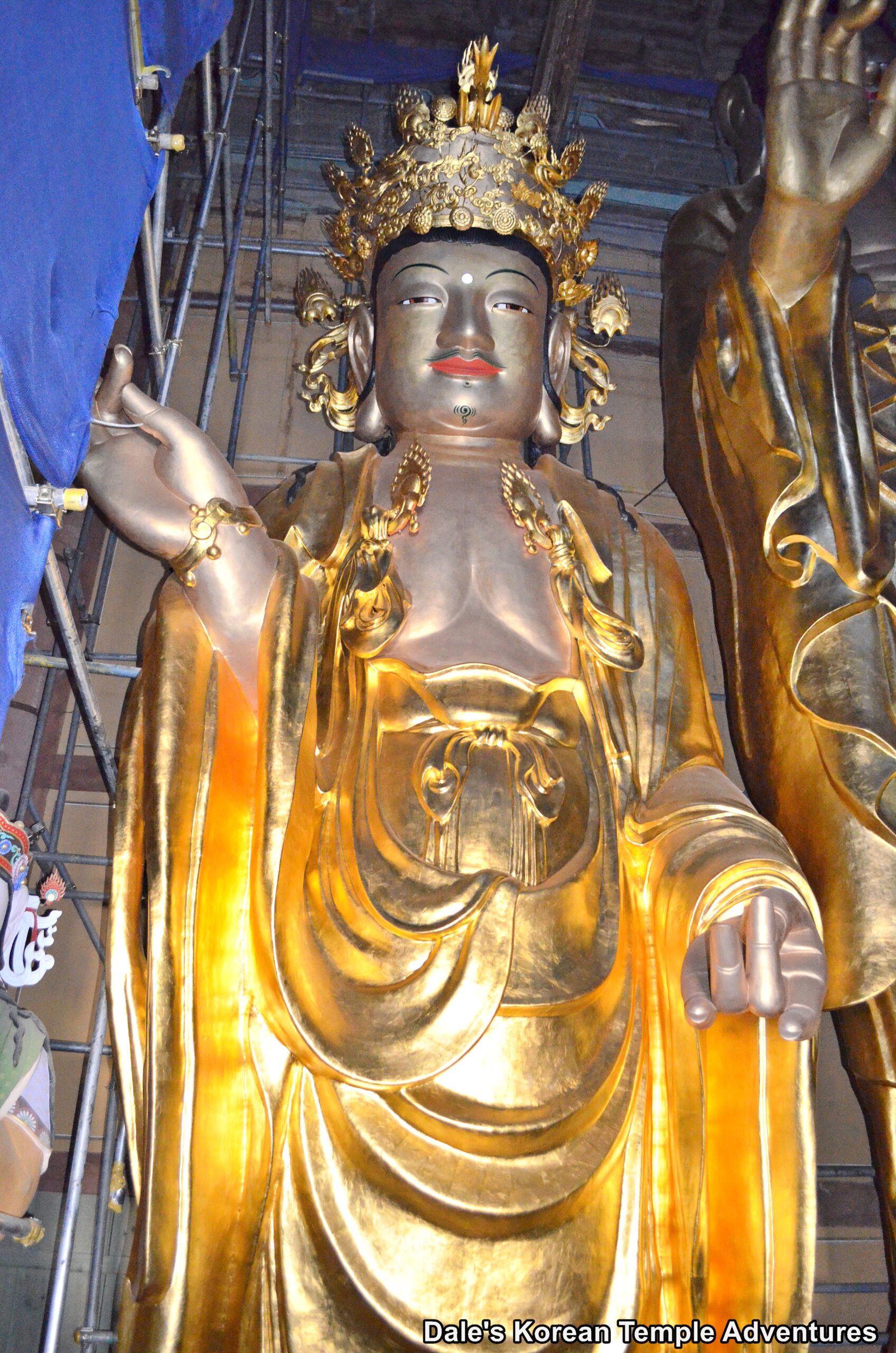Geumsansa Temple – 금산사 (Gimje, Jeollabuk-do)
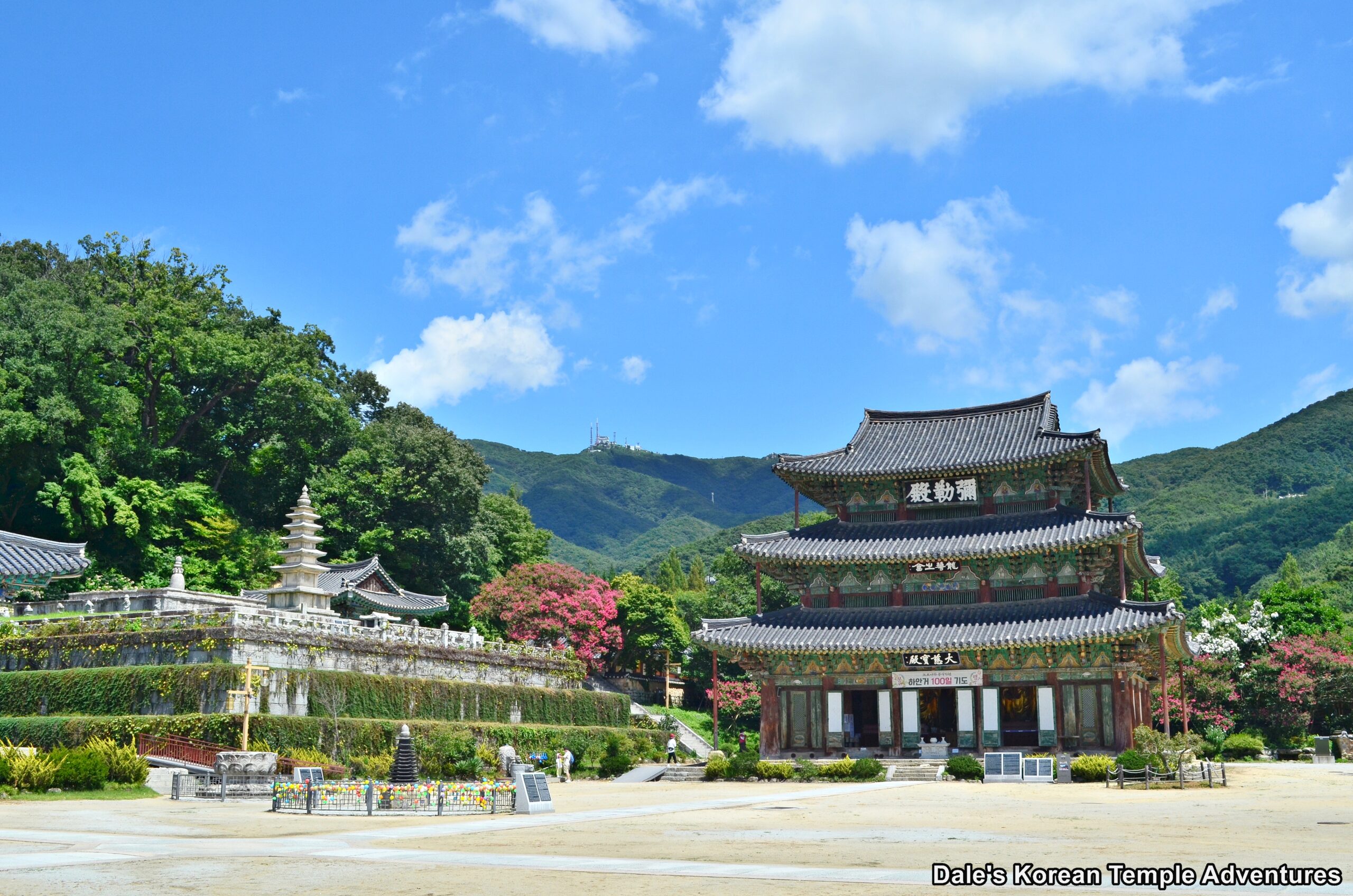
Temple History
Geumsansa Temple, which means “Golden Mountain Temple” in English is located in a flat river valley on the western slopes of Moaksan Provincial Park in Gimje, Jeollabuk-do. Geumsansa Temple was first established in either 599 or 600 A.D., depending on the source, during the reign of King Beop of Baekje (r. 599-600 A.D.). When it was first built, it was rather unassuming and nothing like it is today. It wasn’t until 762 A.D., under the guidance of the monk Jinpyo (8th century), that Geumsansa Temple was rebuilt. Geumsansa Temple was rebuilt over a six year period. Numerous buildings at the temple were rebuilt at this time including the original Mireuk-jeon Hall, which was built in 766 A.D.
There’s an interesting legend that surrounds the reconstruction of Geumsansa Temple by Jinpyo. When Jinpyo decided to dedicate a temple to Mireuk-bul (The Future Buddha), he didn’t know the best location for this temple. So while looking around Jeonju, he met Yongwang (The Dragon King). Jinpyo was presented with a jade robe by Yongwang. After, Yongwang guided Jinpyo to the site of a ruined temple at the foot of Mt. Moaksan (793m). The ruined location was said to be the home of a powerful female Sanshin (Mountain Spirit). Miraculously, and seemingly from out of thin air, men and women arrived to offer assistance in reconstructing the former temple. The temple was rebuilt over the span of a couple of days; and it was at this time that Mireuk-bul appeared and granted Jinpyo his final ordination as a Buddhist monk. Mireuk-bul also gave Jinpyo some sari (crystallized remains) of the Buddha, Seokgamoni-bul. To help commemorate this event, Jinpyo built the enormous Mireuk-jeon Hall with three standing bronze statues inside. Jinpyo also purportedly built the Gyedan (Precepts Altar) at Geumsansa Temple. Housed inside the stupa on top of the Gyedan are the holy relics of the Buddha. Perhaps stretch, but a wonderful foundation myth all the same.
Later, King Gyeon Hwon, of Later Baekje, or “Hubaekje,” in Korean, who reigned from 900 to 935 A.D., had parts of Geumsansa Temple repaired. Ironically, he was later held captive at Geumsansa Temple after his son, King Gyeon Singeom, usurped his father’s throne and had him imprisoned. The temple underwent numerous changes during the Goryeo Dynasty (918-1392). King Munjong of Goryeo’s (r.1046-1083) teacher, the monk Hyedeok (1038-1096), further renovated the look of the temple during this time. Then, in the waning years of the Goryeo Dynasty, Weonmyeong-daesa (1262-1330) had the temple rebuilt, once more.
Even after the Joseon Dynasty (1392-1910) came to power, the Mireuk-bul tradition at the temple remained strong. In 1592, Geumsansa Temple was made the headquarters by the government to oversee all temples in the region for Jeollanam-do Province. During the initial attack of the Korean peninsula by the Japanese as part of the Imjin War in 1592-1593, which is called the “Japanese Disturbance of Imjin,” by Koreans, saw Geumsansa Temple used as a training ground for Buddhist monks known as the Righteous Army. In total, over a thousand monks were led by the monk Noemuk to help defend the Korean peninsula from the Japanese aggressors. It was during the second wave of the Imjin War from 1597-1598, which is known as “Second War of Jeong-yu,” that Geumsansa Temple became a headquarters for the Righteous Army. Tragically, not only were forty regional hermitages destroyed, but so too was Geumsansa Temple and famed Mireuk-jeon Hall.
The restoration of Geumsansa Temple began in 1601, and it was completed over a thirty year process in 1635. Most of the temple buildings, including the rebuilt Mireuk-jeon Hall date back to this period of time. And it’s because of these efforts that Geumsansa Temple is one of the largest Buddhist temples in Korea.
In total, Geumsansa Temple is home to one National Treasure, ten Korean Treasures, one Historic Site, and one National Registered Cultural Heritage. It’s a participant in the very popular Temple Stay program in Korea, too.
Temple Layout
You first approach Geumsansa Temple up a path that skirts a meandering stream. You’ll cross a newly built bridge and be greeted by the temple’s Haetalmun Gate, a different name for the Geumgangmun Gate, that houses statues of a youthful Bohyeon-bosal (The Bodhisattva of Power) and Munsu-bosal (The Bodhisattva of Wisdom). They are joined by two Geumgang-yeoksa (Vajra Warriors) that are placed behind a screened off area for their protection. Next up is the Cheonwangmun Gate that has a fierce collection of the Four Heavenly Kings. But again, these statues, like the ones in the Haetalmun Gate, are slightly obscured by the meshy protective barrier.
After passing by both of these entry gates, and under the Boje-ru Pavillion, you’ll finally enter the expansive temple courtyard at Geumsansa Temple. To your immediate left is the temple’s rather large bell pavilion. And to your immediate right is a newer-looking Gwaneum-jeon Hall. Housed inside this temple shrine hall is a seated and multi-armed statue of the Bodhisattva of Compassion, Gwanseeum-bosal. She wears a unique crown where two of her hands are holding up an image of Amita-bul (The Buddha of the Western Paradise) over her head. The statue of Gwanseeum-bosal is quite original and masterful all in one stroke.
Straight ahead sits the rather large and long main hall. The Daejeokgwang-jeon Hall was Korean Treasure #476 until it was destroyed by fire in 1986. It was quickly rebuilt, and it currently houses eleven statues of various Buddhas and Bodhisattvas on the main altar. The central image is Birojana-bul (The Buddha of Cosmic Energy). This statue is joined to the right and left by Munsu-bosal and Bohyeon-bosal. To the right of this triad of statues stand an additional four statues. They are, in order, Nosana-bul (The Reward Body Buddha), Ilgwang-bosal (The Sun Bodhisattva), Yaksayeorae-bul (The Medicine Buddha, and the Buddha of the Eastern Paradise), and Wolgwang-bosal (The Moon Bodhisattva). And to the left of the main triad of statues is, in order, Seokgamoni-bul (The Historical Buddha), Gwanseeum-bosal, Amita-bul, and Daesaeji-bosal (The Bodhisattva of Wisdom and Power for Amita-bul). The main hall is absolutely packed with Buddhist iconography.
To the left of the Daejeokgwang-jeon Hall are two smaller sized shrine halls. The first is the Daejang-jeon Hall, which was dedicated to Mireuk-bul. This shrine hall is Korean Treasure #827. The hall was originally placed in front of the Mireuk-jeon Hall, and it was a wooden pagoda. However, destroyed during the Imjin War, it was rebuilt in 1653, and it was placed in its present location in 1922. Currently, it houses a statue of Seokgamoni-bul that’s surrounded by an amazing fiery nimbus. The Buddha is joined on the main altar by two of his greatest disciples, Kasyapa and Ananda. The outside walls are adorned with historical monk murals, and the interior is adorned with Palsang-do (The Eight Scenes from the Buddha’s Life) murals. Out in front of the Daejang-jeon Hall is the Stone Lantern of Geumsansa Temple, and it’s Korean Treasure #828. The stone lantern, or “Seokdeung,” in Korean, is believed to date back to the Goryeo Dynasty. It’s simplistic in its overall beauty.
And to the right of the Daejang-jeon Hall is the temple’s Myeongbu-jeon Hall. Sitting on the main altar is an older looking statue of Jijang-bosal (The Bodhisattva of the Afterlife). This statue is joined on both sides by seated wooden statues of the Shiwang (The Ten Kings of the Underworld). And just in front of this hall is the extremely unique stone carving called a Noju, or “Stone Pillar,” in English. The original purpose of the stone pillar is unknown, however, it’s believed that it could have potentially been used to support a Buddhist statue. The Noju is Korean Treasure #22.
Just behind the Daejeokgwang-jeon Hall are three additional temple shrine halls. The first of the three, and the one to the far left and largest of the three, is the rather plain looking Josa-jeon Hall. Housed inside this hall are a collection of paintings dedicated to prominent monks that once called Geumsansa Temple home. To the right of the Josa-jeon Hall is the highly elaborate, and well populated, Nahan-jeon Hall. The triad sitting in the centre of the main altar consists of Seokgamoni-bul sitting in the centre. This statue is joined on either side by Yeondeung-bul (The Past Buddha) and Mireuk-bul (The Future Buddha). These three statues are joined on the main altar by the sixteen Nahan (The Historical Disciples of the Buddha). In addition to these statues on the main altar, they are backed by an additional five hundred statues of Nahan. One Nahan even looks like Arnold Schwarzenegger (The Terminator!). Unfortunately, and like the main hall, the Nahan-jeon Hall was destroyed by fire in 1986. And between these two former shrine halls is the Samseong-gak Hall. Out in front of this shaman shrine hall is an ugly gnarled tree. And inside are three older murals of Chilseong (The Seven Stars), Sanshin (The Mountain Spirit), and Dokseong (The Lonely Saint).
Next to these three shrine halls and the main hall are a stone set of stairs. This is the Bangdeung Gyedan. Housed in the centre of this stone shrine is a crowned stone lotus bud that formally housed five sari (crystallized remains) of the Buddha. The sari are now housed inside Geumsansa Temple’s museum. The stone lotus bud, which is also called a “stone bell,” is the oldest stone bell still in existence in Korea. The four corners of the Ordination Platform are adorned with the Four Heavenly Kings. And the actual stone bell is adorned with the Buddha, deities, and human figures. In front of this stone lotus bud is an early Goryeo Dynasty (918-1392) five-story stone pagoda. The entire structure is surrounded by stone guardians. To the right is a shrine hall that has no statues of the Buddha inside. Instead, and like the Geumgang Gyedan at Tongdosa Temple in Yangsan, Gyeongsangnam-do, there’s a window that looks out onto the Bangdeung Gyedan and the former home for the Buddha’s remains. The Bangdeung Gyedan is Korean Treasure #26, while the pagoda is Korean Treasure #25.
The final hall at Geumsansa Temple, and the most impressive, is the three-story wooden structure called the Mireuk-jeon Hall. The hall is Korean National Treasure #62. The massive Mireuk-jeon Hall dates back to 1635, and it houses three equally massive statues of Mireuk-bul, for which the shrine hall gets its name, alongside Beophwarim-bosal and Daemyosang-bosal. The tallest of the three statues is dedicated to Mireuk-bul, rather obviously, and it stands twelve metres in height. And on each story of the three-story structure, there are three name plates. They are, in order, the Daejabo-jeon (“Hall of Great Mercy and Treasure”) for the first, Yonghwaji-hoe (“Assembly of Dragon Flower”) for the second, and Mireuk-jeon (“Hall of Maitreya”) for the third. It’s an extremely unique structure both inside and out.
And in the temple courtyard, there are a smattering of stone structures. The first, which stands out in front of the Daejeokgwang-jeon Hall is the Stone Lotus Pedestal. This pedestal is Korean Treasure #23. The Stone Lotus Pedestal used to support a Buddha statue, and it dates back to Later Silla (668-935) or early Goryeo Dynasty (918-1392). Another object in the temple courtyard, and Korean Treasure #27, is the Hexagonal Multi-Story Stone Pagoda. The pagoda is believed to date back, also, to the early Goryeo Dynasty. Unlike other tetragonal pagodas made with bright gray granite, this hexagonal stone pagoda was made with black-and-white slate. It’s really an unusually shaped pagoda in Korea for any era.
Geumsansa Temple Hermitages
In total, Geumsansa Temple is home to just 2 hermitages on the temple grounds. Both are located to the east of the main temple. Here is a list of both hermitages:
1. Simwonam Hermitage – 심원암
2. Cheongryeonam Hermitage – 청련암
How To Get There
To get to Geumsansa Temple, you’ll first need to get to the Jeonju Express Bus Terminal. From here, you’ll need to take Bus #79 to get to Geumsansa Temple. The bus first leaves this terminal at 6:24 a.m., and they stop running at 10:45 p.m. This bus leaves the terminal every twenty-five mintues. Also, you can catch a bus from the Gimje Intercity Bus Terminal or Gimje Station. You’ll need to find Bus #5, which will bring you directly to Geumsansa Temple.
Overall Rating: 10/10
What isn’t to love about Geumsansa Temple? Starting with the Mireuk-jeon Hall, which is something extremely special, and continuing on towards the ten other Korean Treasures, this temple truly has something for everyone including an Ordination Altar, unique pagodas, and shrine halls. And if you have the time, a trip to the Geumsansa Temple museum is also well worth your time, too. While a bit out of the way to visit, it’s well worth it!
